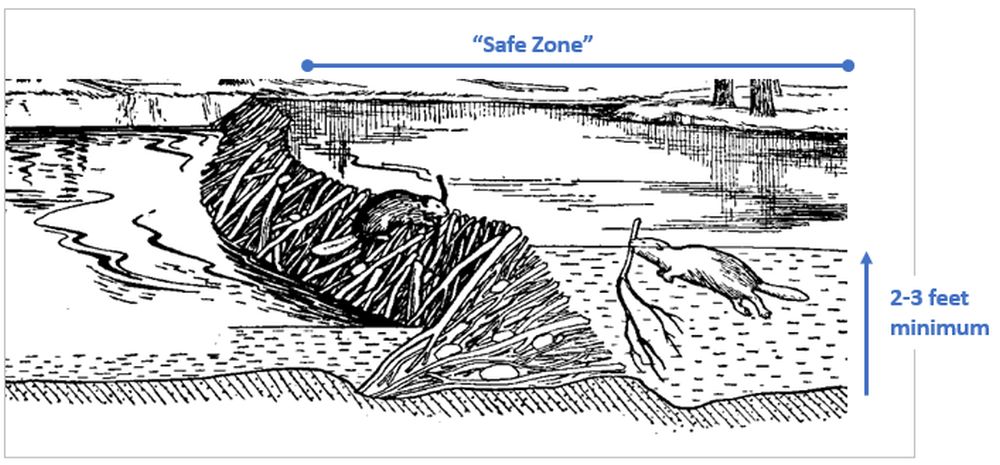Field Report 7: (Too) Hot and Dry Summer - What does this mean for High Desert Beavers?
Boy is it hot out there! According to the National Oceanic and Atmospheric Administration, June 2021 was the hottest June ever on record. At this point, in mid-Summer, our daytime temperatures continue to be well above average.
This report comes from a new monitoring location, a small spring-fed tributary that feeds into the Crooked River – we’re calling it “Tributary B”. This 2 mile stretch of stream sits within a working ranch – where the landowners have been stewarding the landscape over the years by planting willows to help stream recovery and keeping cows out of sensitive riparian areas.
With established vegetation, beaver have moved in and are tenuously (and quite admirably!) making a go out of this high desert stream. In this field report we bring you our observations and the story of the beavers in a small stretch of the tributary.
Most weekends we’ve been checking on our monitoring cameras. Initially, we would visit the site in the afternoons, but then switched to early morning visits to avoid the heat of day. With each visit we notice the water level dropping and dropping pretty significantly. During a short 6 weeks of site monitoring, we’ve seen the water level drop a striking 2 feet.
Beavers generally need a minimum of 2 ½ feet of water depth in order to sufficiently cover the entrance or access opening into their den. Clumsy and slow on land, beavers are vulnerable to predators away from water. When water levels drop too much, beavers must take risks – such as harvesting food on land away from the stream, or relocating altogether over land to find safe “in stream” lodgings.




We also observed that much of the beavers favorite nearby food source (primarily willows) was depleted within their immediate home range (close to their den and major damming activities). With the lack of nearby food we wondered and worried: how would these beavers fair as they’d need to travel on land to find food sources.
Further, while some sections of the stream are still relatively deep, many sections have dropped and entirely dried out, leaving fewer deep spots for the beavers. How will these drought conditions, lack of water and nearby food, impact this beaver family the others nearby – as the ‘refugee beaver family’ in our cameras seek safer part of the stream?
This summer will be risky for this family, we continue monitoring their location and activity throughout the stream. Check back again for further updates.
AN UPDATE – EARLY AUGUST
Despite continued heat and drought conditions, and sections of the stream now entirely dried up, there are sections within the 2 mile study area still percolating with water trickles (perhaps spring fed and from hyporheic releases from upstream water capture). In a week of trail cam monitoring one older dam site (we refer to as “site 8”) with clearly suboptimal conditions, nonetheless seems to be a favorite grooming and sometimes eating location.

In the videos below: beavers snacking, an otter visitor adjusting our camera and then a beaver family grooming.



